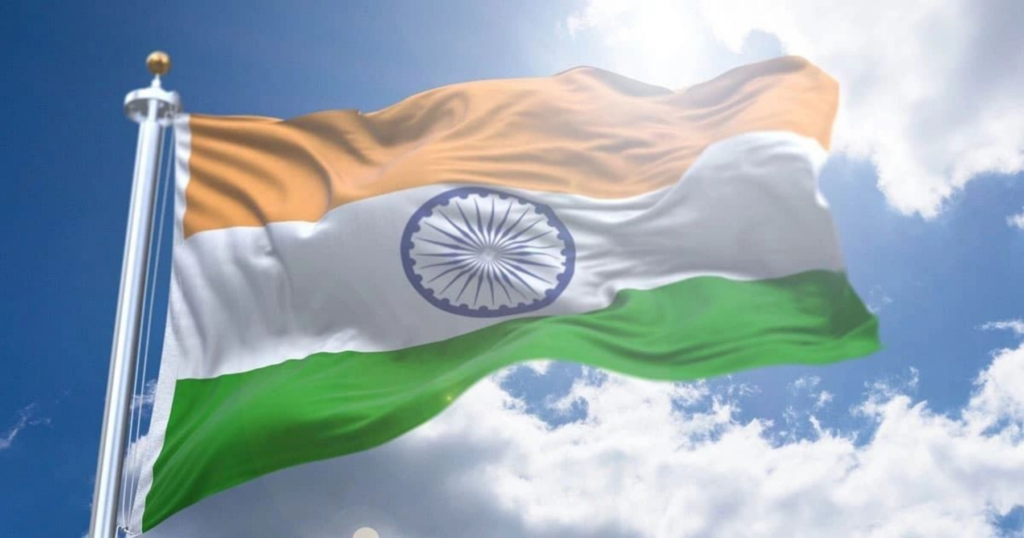Azadi ka Mahotsav is being observed on India’s 75th Independence Day to recognise the country’s post-independence development and expansion. In order to urge people to bring the Tiranga home and hoist it to celebrate India’s 75th year of independence, the government of India launched the “Har Ghar Tiranga” campaign. The objective behind the effort is to inspire the emotion of patriotism in the hearts of the people and to promote knowledge about the Indian National Flag.
WHO DESIGNED OUR NATIONAL FLAG

After we won our independence against the British raj that is – on the 15th of August 1947, Indian leaders realized the need to have a National-flag for Independent India. Accordingly, an ad-hoc Flag Committee was formed to finalize the Flag. On its recommendation, the Constituent Assembly on 22nd July 1947 adopted the Tiranga as the National flag for free India.
The credit for designing the Indian National Flag goes to Pingali Venkayya , a Gandhi loyalist from Andhra Pradesh who gave the freedom movement its most recognisable symbol as a young man in 1921. It is said that at the All India Congress Committee meeting held in Bezwada (now Vijayawada) Pingali Venkayya drafted the design of the Congress flag – which would go on to become the banner under which India would later unite in 1947 – but with one substantial difference
WHEN AND WHO HOISTED THE INDIAN FLAG FIRST

The first outdoor official flag hoisting of Tiranga on the 15th of August 1947, took place in Canberra, Australia at the residence of Sir Raghunath Paranype, the High Commission of India in Australia at 1200 hrs local time and at 0730 hrs IST which means three hours in advance of the first flag hoisting in India that took place at 10:30 AM on the day at the present day Parliament House.
On August 16, 1947, a Saturday, at 8.30 a.m., Tiranga was first unfurled on the Red Fort’s ramparts following Independence. The flag hoisting at Red Fort was planned for and carried out the following day, on August 16, 1947, because Jawahar Lal Nehru, the first Prime Minister of India, was preoccupied on August 15 with numerous other necessary official formalities.
WHAT DO COLORS MEAN ON TIRANGA

- The Saffron color stands for courage, sacrifice, valor, and the spirit of renunciation. It points to both wisdom and action. The color also represents the scorched condition of the earth caused by the torrid heat of the Indian sun. It is the color of spiritual life led by sadhus, saints, pirs, fakirs, and Brahmans.
- The White color in Tiranga stands for purity. It is symbolic of the sun’s rays and thus denotes the path of light. It is also for peace and tranquility. The White color of the Flag as well represents every religion and every language in the country.
- The Green color is for growth and denotes our relationship with the earth. Hence, it is the color of vegetation, agriculture, and plant life on which all other life depends. The Green also stands for hope and largely we live on hope.
- The Blue in our flag signifies the boundless sky above and the fathomless sea below. The Asoka Chakra was selected as a depiction of Dharma. The size of the Asoka Chakra was not defined in the Flag code. The Asoka Chakra should have 24 spokes that are uniformly spaced. The Asoka Chakra is in a Navy-blue color on the white strip of the flag.
The wheel of Ashok Chakra has been used since ancient times in India as a solar symbol. In July 1947, the Flag Committee chose Ashoka’s Dharma Chakra for the reason that amongst all the chakras that came to their mind the “Sarnath Chakra” was the most beautiful and artistic.
WHO CAN HOST THE NATIONAL FLAG ON CARS
The privilege of hosting the National Flag on motor cars is only limited to the following persons as per paragraph 3.44 of the Flag Code of India, 2002.
- President
- Vice-President
- Governors and Lieutenant Governors
- Heads of Indian Missions/Posts
- Prime Minister
- Cabinet Ministers, Minister of State, and Deputy Ministers of the Union
- Chief Minister and Cabinet Minister of a State or Union Territory
- Speaker of the Lok Sabha, Deputy Chairman of Rajya Sabha, Deputy Speaker of Lok Sabha, Chairman of Legislative Councils in States, Speakers of the Legislative Assemblies in States and Union Territories, Deputy Chairman of Legislative Council in States, Deputy Speakers of Legislative Assemblies in States and Union Territories
- Chief Justice of India
- Judges of Supreme Court
- Chief Justice of High Courts
- Judges of High Courts
FLAG CODE OF CONDUCT

- The ratio of the width to the length of the Flag shall ordinarily in the ratio of 2 : 3. If the length of our National-flag is 24 feet, then the width will be 18 feet.
- In 2002, the Government of India had allowed citizens to fly the National flag on all days, but by then it was not a Fundamental Right. You can fly your National-flag at your home or at your workplace on all 365 days of the year.
- The Flag is normally flown between sunrise and sunset. The Flag can be flown during night hours provided; it is on a 100ft or above flagpole and is adequately illuminated.
- In the event of the death of certain dignitaries recognized by the center/state governments, the National Flag shall be at half-mast at certain places and for specified days.
- When the National Flag is displayed in a straight line with flags of other countries, the National Flag shall be on the extreme right. The flags of other nations will follow in alphabetical order as per the English versions of the names of the nations.
- If the flags are flown in a closed circle formation, the National Flag is flown first and is followed by flags of other nations in a clockwise manner.
- When the flag is displayed against the wall with another flag from crossed staffs, the National Flag shall be on the right and its staff will be in front of the staff of the other flag.
- When the National Flag is flown with flags of other nations, the flag masts shall be of equal size.

